Did you just do a major clean-up in your aquarium? A major water change after months of neglect?
Did you experience sudden fish loss? Does the bottom of your aquarium look like the tides of Normandy on D-Day?
It’s okay. I feel your pain. Although not too common, sometimes something can go wrong when you think you’re doing the right thing.
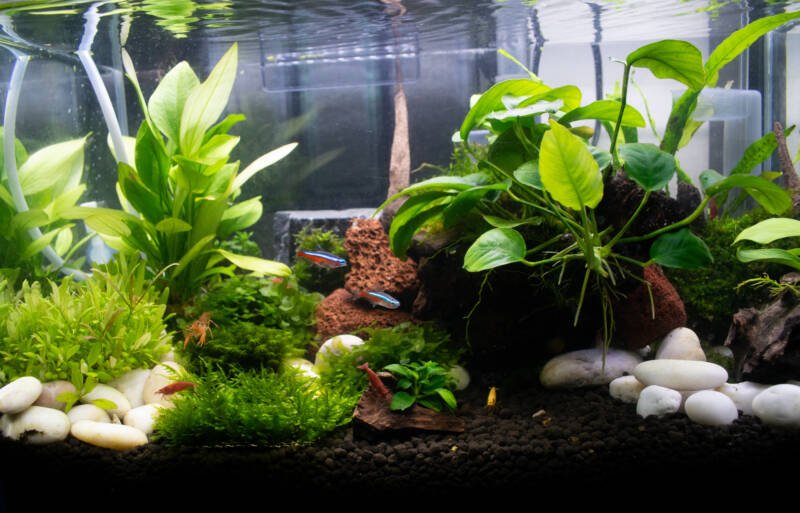
In this article, we’re going to cover some of the reasons why fish die or get stressed after a water change and how to prevent fish loss during and after a water change.
In this article
Fish Loss Causes After a Water Change
First, allow me to offer you my condolences. It’s hard losing pets, especially when you think you’re doing the right thing. Sometimes these things happen.
Consider this a learning experience. New fishkeepers make mistakes, but experienced fishkeepers are the ones who learned from them.
There are several reasons fish may die or be stressed after a water change. These reasons include:
- Poisoning and chemical burns
- Physical trauma
- Ecological collapse.
I’ll cover reasons and prevention in detail below, followed by a walk-through of safe water changes to prevent fish loss and stress in the future.
Poisoning and Chemical Burns
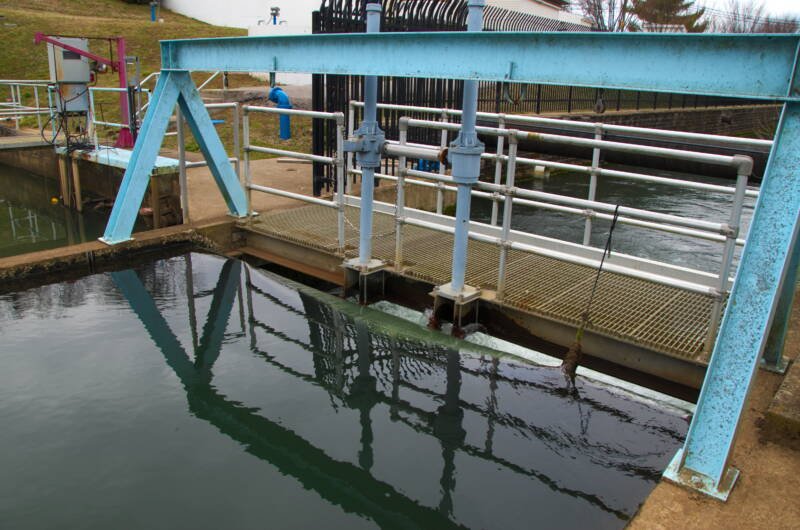
Fish are sensitive creatures. Living completely submerged in water, they secrete mucus membranes to protect themselves from harmful substances dissolved in their environments.
Their mucus membranes can’t prevent harm from everything, though. Some of the chemicals they’re incredibly sensitive to include:
- ammonia
- chlorine
- chlorine dioxide
- chloramine
- fluoride.
You might recognize these chemicals because they’re commonly used to treat drinking water. They are present in safe amounts for human consumption, but for fish, however, it’s a different story.
These chemicals cut through their mucus membranes, burning their scales and gills.
The end result is an injured fish, who very well may be poisoned and die, depending on the amount of tap water used.
How to Prevent Poisoning and Chemical Burst
To prevent this, you must treat your water with a water conditioner or dechlorinator.
Every time you use tap water to fill up your aquariums, use a water conditioner to neutralize any heavy metals or any other chemicals present.
My personal favorite is Seachem Prime. It’s incredibly easy to use and works almost instantly.
You may have heard about people leaving their water out or aerating it before adding it to their aquarium to break down chlorine and fluoride in it. I DO NOT recommend this.
This may have been a useful technique in the past, but only with chlorine.
Most major cities use chloramine to treat their drinking water (source), which doesn’t readily dissipate over time (source).
You HAVE to use a water conditioner to break down chloramine in municipal water before adding it to your aquarium.
I also recommend adding it to well water. Heavy metals leach into groundwater, especially in rural areas with lots of fertilizer use, and those end up in your aquarium.
Physical Trauma
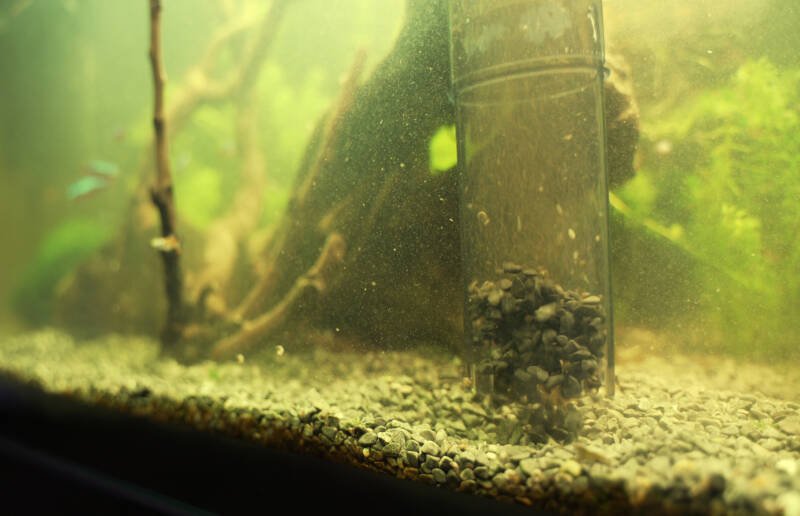
Accidents happen. Especially when your poor, scared fish are darting around maniacally to avoid the large tube that suddenly appeared from the sky to remove their precious water.
Use care when performing water changes to prevent any injuries in fish. They’re scared and sensitive.
Smaller fish are easily sucked into gravel vacuums.
Decorations and hardscape can be knocked over onto larger, slower fish if you aren’t careful. All of this can lead to stress and trauma.
How to Treat Fish Injuries
Physical trauma and injuries are best treated by isolating injured fish in an established quarantine tank.
Most wounds should heal on their own, but if required, an isolation tank allows easier and safer administration of medication.
I’ve also found bringing the pH of an isolation tank down as low as the fish can tolerate, through natural means like catappa leaves and driftwood, speeds healing in injured fish.
Ecological Collapse
Let me set the stage:
It’s been months since a good water change, and algae scrub down. There are piles of waste filling the substrate. The filter’s clogged from all the fish poop.
So you clean it. Clean it hard. Your fish tank looks like it did the day you took that Instagram picture Aquatic Arts liked.
You did a 50% water change, vacuumed that substrate better than your own living room, cleaned out your filter media, EVERYTHING.
Then you go check out your beautiful like-new tank in the morning, and you see nothing but death. Your precious serpae tetra, gone. Your bristlenose pleco, passed.
Your tank experienced…ecological collapse. And there might be a couple of reasons why.
Causes of Ecological Collapse in your Aquarium
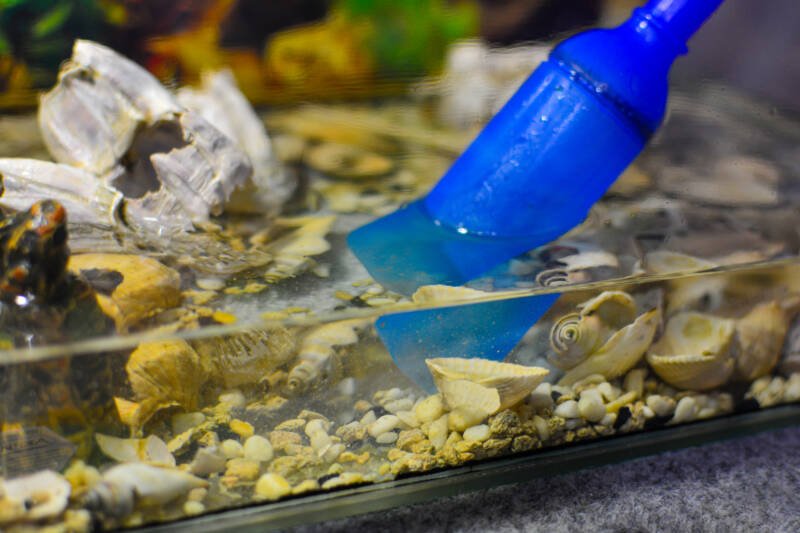
You Didn’t Use a Water Conditioner
First, maybe you didn’t use a water conditioner. That’s a big no-no, as previously mentioned.
Those same chemicals we use to sanitize our drinking water are very good at destroying the bacterial colonies we spent so much time establishing while cycling our aquarium.
You Might have Changed too Much Water, too Fast
Second, you probably changed too much water, too fast.
Once fish tanks are established, weekly 10-20% water changes are really all you need to perform in your average aquarium.
If your aquarium has a lot of livestock, 20-30% weekly water changes may be necessary.
If it’s been a long time since your last water change, you might feel compelled to do a larger water change to compensate. DON’T do this.
If it’s been a long time since your last water change, remove less water more frequently.
Large swings in water chemistry are dangerous for all aquarium inhabitants. The longer you wait between water changes, the larger the difference between the water removed and the water added.
Instead of doing a major water change, start off by doing 10% water changes initially, every 3-4 days.
This will help reduce nitrates, and other dissolved compounds, at a steady rate. This prevents any shock that may come from a major change in water chemistry.
You “Deep-Cleaned” a Little too Deeply
There are all sorts of small tasks involved when cleaning up an aquarium. Vacuuming substrate, scraping aquarium walls, rinsing filter media, the list goes on.
You shouldn’t perform all these tasks at once, however.
Every single surface in your aquarium is covered in wonderful colonies of bacteria for processing fish waste.
Again, we spent at least a month cycling our aquariums to establish them before adding any living creatures, right?
Why would we go through all that effort just to get rid of them faster than they can repopulate?
If you spent extra time deep vacuuming your substrate and then rinsed your filter media thoroughly after scrubbing every surface in your aquarium, you might be doing just that.
Space out your aquarium chores over time to prevent destroying helpful bacteria colonies.
Again, too many changes all at once in aquaria can lead to loss.
Schedule your maintenance tasks over several days of each month to prevent undue stress to your aquarium’s ecology and inhabitants.
Rinse filter media two days after water changes and substrate vacuuming. Scrub and scrape aquarium surfaces every other week.
How to Safely Perform Water Changes to Prevent Fish Death and Stress
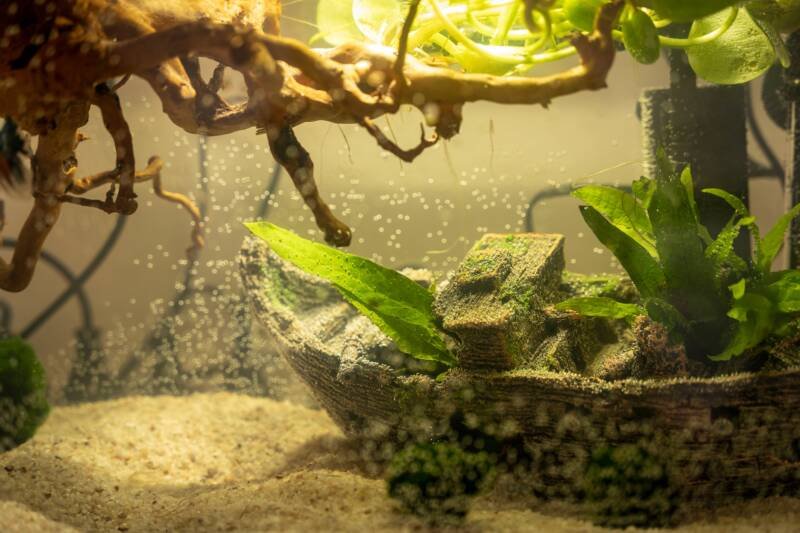
Here’s a quick 5-step plan to safely perform water changes and aquarium clean-up:
1. Schedule your water changes
Performing water changes on a regular schedule prevents harm to livestock and bacterial colonies. Change water 10-20% weekly in an average fish tank.
2. Treat your water with a water conditioner
Have a bucket or reservoir available to condition water before adding it to your aquarium.
3. Scrape or scrub algae
If possible, perform this task biweekly to prevent disruption to bacterial colonies. Do this before siphoning out water in order to remove algae more effectively.
4. Use a substrate vacuum to remove waste
Performing this little by little every water change helps prevent the need for major clean-ups, in turn preventing loss of bacterial colonies.
5. Rinse mechanical filter media
Use a small amount of aquarium water or conditioned water to do this safely. Perform this task between water changes for best results.
Conclusion
A lot can go wrong when you’re an inexperienced fishkeeper, but that’s alright.
Do your best to learn all you can and develop safe fishkeeping habits, and you won’t have anything to worry about.
If you take the time to perform safe water changes, you most assuredly won’t have any unexpected fish loss, from water changes at least.
Please feel free to leave any comments or questions below!